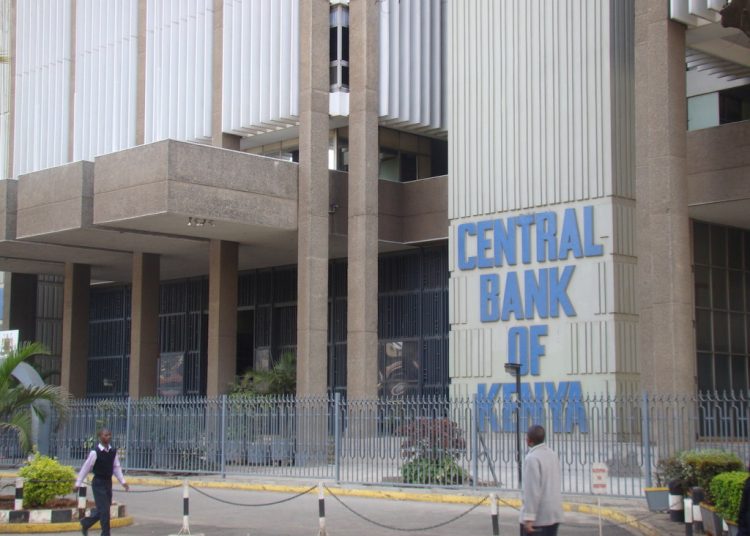The Central Bank of Kenya (CBK) has announced the issuance of a Discussion Paper on Central Bank Digital Currency (CBDC) for public comments. The Discussion Paper examines the applicability of a potential CBDC in Kenya.
The digital currency issued by the Central Bank is intended to serve as legal tender by being a peer to other forms of electronic money (e-money), cryptocurrency and stable coins. A stable coin is a crypto asset that aims to maintain a stable value relative to a specified asset, or a pool of assets. A Global Stable Coin (GSC) is a stable coin with a potential reach and adoption across multiple jurisdictions and the potential to achieve substantial
volume.
“Among the policymakers that are looking to step up are central banks across the globe in both advanced and developing economies. Central banks are exploring the possibility of rolling out CBDC solutions to meet their future payments needs in a digital economy,” said CBK.
Read: Digital Lenders Flex Muscles With CBK Over Absolute Control
According to a 2021 survey of central banks conducted by the Bank for International Settlements (BIS), it was observed that 86 percent of central banks are actively researching the potential for CBDCs, 60 percent were experimenting with the technology and 14 percent were deploying pilot projects.
The growing interest in the adoption of CBDC by various jurisdictions has been motivated by varying reasons, for example, central banks, faced with dwindling usage of paper currency, seeking to popularize a more acceptable electronic form of currency (like Sweden).
According to CBK, central banks are also seeking to meet the public’s need for digital currencies manifested in the increasing use of private virtual currencies, and thereby avoid the more damaging consequences of such private currencies.
“A CBDC is a digital currency issued by the central bank and intended to serve as legal tender. It is the same as a fiat currency and is exchangeable one-to-one with the fiat currency, only that it is in electronic form. As opposed to the other forms of electronic money issued by central banks, that is central bank reserves, CBDC designed for retail payments would be universally available,” said CBK in the Discussion Paper.
Read: Will Africa’s economies buckle under the coronavirus?
Today, the reliance on cash and mobile money remains the most significant in Kenya’s payment ecosystem, especially in retail payments.
The Global Competitiveness Report, 2019, by World Economic Forum (WEF) ranks Kenya as the 27th country in mobile-cellular telephone subscriptions. According to the CBK FinAccess report, 2021, just under half of the domestic remittances and over 30 percent of bill payments are made via mobile money.
Kenya ranks third after Mongolia and China in financial inclusion out of 52 countries within emerging markets and developing economies. The digital financial inclusion index (financial inclusion through fintech) is higher than the traditional financial inclusion index (financial inclusion through financial institutions such as banks).
Read: CBK suspends Absa Bank from forex market
According to the CBK FinAccess report, 2021, Kenya has a population of 47.6 million people. In 2021, financial inclusion was 83 percent from 26 percent in 2006. Mobile money has been credited for the growth in financial inclusion. In 2020, the mobile penetration in Kenya was 129.1 percent.
As of May 2021, there were 67.77 million registered mobile money accounts. 79 percent of adults have a mobile money account compared to 40 percent of adults who have a bank account.
Mobile payment is complimented by card transactions in the digital payments’ realm in Kenya. In 2020, card payments amounted to USD6.5 billion, a significant share of all payment transactions.
“A CBDC could enhance financial stability in a jurisdiction by contributing to resilience in payments. By providing a new method of making payments, a CBDC could diversify the range of payments options,” says CBK.
Read: Mobile money edging out ATMs
CBK also says the introduction of CBDC could make the financial system safer by allowing individuals, private sector companies and non-bank financial institutions to settle directly in central bank money, rather than bank deposits.
“This would significantly reduce the concentration of liquidity and credit risk in payment systems. This in turn reduces the systemic importance of large banks and PSPs. However, the central bank would enter into direct competition with the banks and PSPs it regulates. This could potentially trigger scrutiny on the existing regulatory frameworks,” added CBK.
CBK says that an open CBDC platform could allow a range of firms to innovate around CBDC-related payment services and also be able to re-innovate the payment services they provide to consumers.
Read: Kenya leads Africa in stealing aid money, new report shows
On the flipside, CBK says that CBDC could disintermediate banks.
“If significant deposit balances are moved from bank deposits to CBDC, banks’ ability for credit creation could get constrained. Since central banks cannot provide credit to the private sector, the impact on the role of bank credit needs to be well understood. Further, as banks lose a significant volume of low-cost transaction deposits, their interest margin might come under stress leading to an increase in the cost of credit. However, these could potentially be mitigated by an instance where the CBDC is not interest-bearing. Therefore, the public would be motivated to hold money in interest-bearing bank deposits,” adds CBK.
Despite having the potential to reduce the cost of printing money, CBDC introduces the production costs (fixed and variable) of running CBDC infrastructure.



![[Photo/KNA]](https://financialday.co.ke/wp-content/uploads/2024/04/DSC_0505-1200x630-1-360x180.jpg)
![[Photo/Unsplash]](https://financialday.co.ke/wp-content/uploads/2023/08/GROCERY-360x180.jpg)

